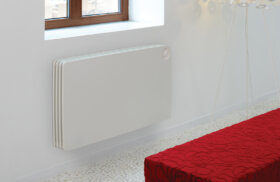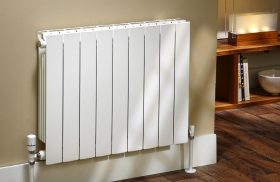When it comes to choosing the right radiator size for your space, the question that often arises is, “What size radiator do I need?”
Determining the appropriate size of the radiator is a crucial step in ensuring that it provides the right amount of heat for the room without wasting energy. In this guide, we will explore the factors and considerations involved in answering this common question.
Understanding the Importance of Radiator Size
When a radiator is too large, it’ll produce too much heat for the room and rack up your heating bill unnecessarily. This is not ideal for the environment and puts strain on your energy usage. Sustainability is a bigger priority now than ever before and with rising energy prices, it’s become more desirable to invest in energy efficient radiators.
However, even if you choose an energy efficient radiator, the size you need is still in question. In order to avoid wasteful energy consumption, choosing the correct radiator size for the room is important. This will ensure that your radiator has the optimal heat output and your home remains warm and cosy all through the cold and rainy season.
Utilising the Room Heat Calculator
In order to determine the required heat your room needs, it is helpful to make use of a Heat Calculator. A room heat calculator for radiators is a valuable tool that estimates the heat output required to maintain a comfortable temperature in your room. There are several advantages to using the room heat calculator:
- Provides a more accurate estimate than relying on guesswork or assumptions.
- Helps choose the right radiator size to avoid overspending on unnecessary heating capacity.
- Prevents underheating, which can lead to increased energy consumption and bills.
- Ensures consistent and comfortable temperatures in your rooms.
- Choosing the right size radiator extends its lifespan and prevents overheating or underperformance.
Using a room heat calculator is straightforward and simple. Here’s a general guide:
Choose the calculator: Many online and smartphone app options are available, each with slightly different interfaces. The Radiator Centre’s calculator is very easy to use with only three steps to follow.
- Enter room dimensions – Measure the height of your room in metres and the floor area. You should also include the floor level of the room.
- Select external walls and windows details – Choose between options like solid, cavity or insulated wall as well as the window type (single glass or double glass). Select the length of the outside walls and the area of windows in square metres.
- Tick off any variations – Include special features about the room that will impact the heat required. Then press the “Calculate” button to see the estimated radiator heat output required (in Watts).
What does BTU mean in relation to radiators?
With radiators, the British Thermal Unit (BTU) measurement refers to how much energy is required to heat a particular room. The higher the BTU number is, the greater the radiator’s heat output will be. Once you get the amount needed in Watts, you can get the correct BTU amount (1 Watt is approx. 3.4 BTU/hour).
Variables Impacting Heat Output and Calculation
The heat calculation won’t always be 100% accurate and that’s simply because there are many other factors that impact your heating.
Every room is different. Not just in size and position but also in use. The optimum temperature for each room depends on the activities that are carried out in it. For example, kitchens generally need a lower ambient temperature because the appliances in them will give out heat when they’re in use.
The ambient temperature in the bathroom tends to be a bit higher to keep you nice and warm when you’re having a shower or bath. Sun exposure can also play a part as south-facing rooms often receive more sunlight, requiring smaller radiators or lower temperature settings compared to north-facing rooms.
It’s essential to know the ambient temperatures of each room to know how much heat they actually require.
- High activity rooms – Living rooms and home offices often benefit from slightly higher temperatures (around 20-21°C) for optimal comfort during active use.
- Low activity rooms – Bedrooms generally require cooler temperatures (around 16-18°C) for restful sleep.
- Occasional use rooms – Guest rooms or storage spaces may not need constant heating and can have the lowest temperature settings.
Visit Our Showrooms for In-Depth Exploration
When you buy radiators from us, we will always double-check the heat calculation in order to be certain you are buying a radiator that’s the right size.
Selecting the right radiator size involves thoughtful consideration of various factors to ensure optimal heat output and energy efficiency. By using our Room Heat Calculator and seeking expert advice, you can confidently choose the perfect radiator for each space in your home.
For a hands-on experience and to explore our diverse range of radiators, visit one of our showrooms today. Make informed decisions to enhance the comfort and efficiency of your heating system.





